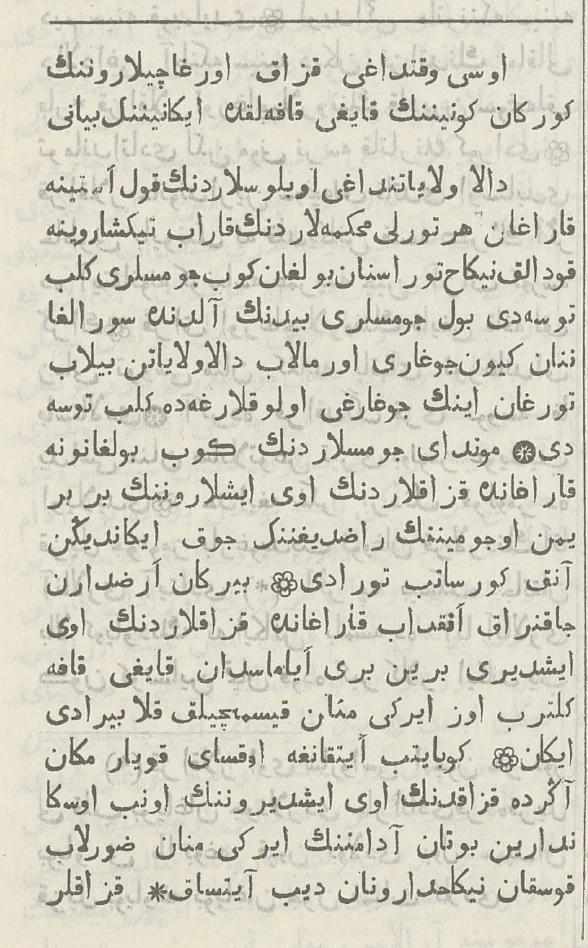As the nineteenth century gave way to the twentieth, a great wave of awakening surged through Kazakh intellectuals, sparking a passionate quest for knowledge. This outpouring of intellectual zeal led to an explosion of new magazines and newspapers being published in Kazakh, heralding the dawn of a new era in sharing culture. However, what these intellectuals wrote went beyond only spreading knowledge. Soon, a variety of publications emerged, covering topics like business, society, politics, art, and humor. Qalam invites you to explore snippets from Kazakh publishing culture and history, offering a glimpse into the important issues of the past.
As we have mentioned earlier, the Kirgizskaia Stepnaia Gazeta served as a voice for government propaganda in the Steppe region in the late 19th and early 20th centuries. The primary ideological message of the newspaper centered on the ‘civilizing’ mission of the Russian Empire toward the ‘natives’ of Central Asia, particularly in the Steppe region. The newspaper also published numerous ethnographic materials on the daily life, culture, and traditions of the Kazakhs; however, many of these articles held questionable scientific value and were often overtly anti-Kazakh.
Nonetheless, alongside publications steeped in the colonial ideology of the Tsarist administration, there appeared articles with what could be considered a 'progressive' agenda, offering thoughtful insights into Kazakh society of the time. One example was a series of articles published in August 1894 by prominent Kazakh educator and folklorist Otynshy Aljanov (1873–1918), under the revealing title 'The Sad Plight of Kazakh Women.' In this series, Aljanov—who would later become a prominent leader in the Alash Movement and a commander of the Alash Militia—described the harsh conditions faced by women in traditional Kazakh families.
Yet the full burden of unfortunate consequences, inevitably arising from these types of relationships, falls primarily—and most heavily—upon the Kazakh woman. Seen as the weaker being, and therefore, as is the case among all uncultured peoples, she remains voiceless and without rights.

In his assessment of the status of women in traditional society, he draws on Kazakh folklore, including songs and epics.

Kirgizskaia Stepnaia Gazeta/From open access
Poor Kazakh women, obeying their parents' will, must unquestioningly marry infants, old men, or whomever their elders choose. They do not voice any disagreement to their parents; it would be pointless, as the parents, according to the song, are ‘deaf, mute, and greedy’. These poor Kyrgyz women lament their sorrow and sing, often turning to God:
"Creator! You made all people
And scattered them across the face of the earth.
You gave men greater physical strength,
And subjected us, women, to them.
Creator! Your mercies are boundless.
There is no favoritism in Your justice!
But where is Your great mercy?
Where is Your divine justice?
We women are despised,
We women are sold.
O Creator! Have mercy on us,
Protect us, give us strength."
The Kirgizskaia Stepnaia Gazeta (in Kazakh, Dala Uälaiatynyñ Gazetі) was a special supplement to the Akmolinsk (1888–1905), Semipalatinsk (1894–1905), and Semirechensk (1894–1901) regional gazettes. It was published in Omsk in Russian with additional content in Kazakh.




